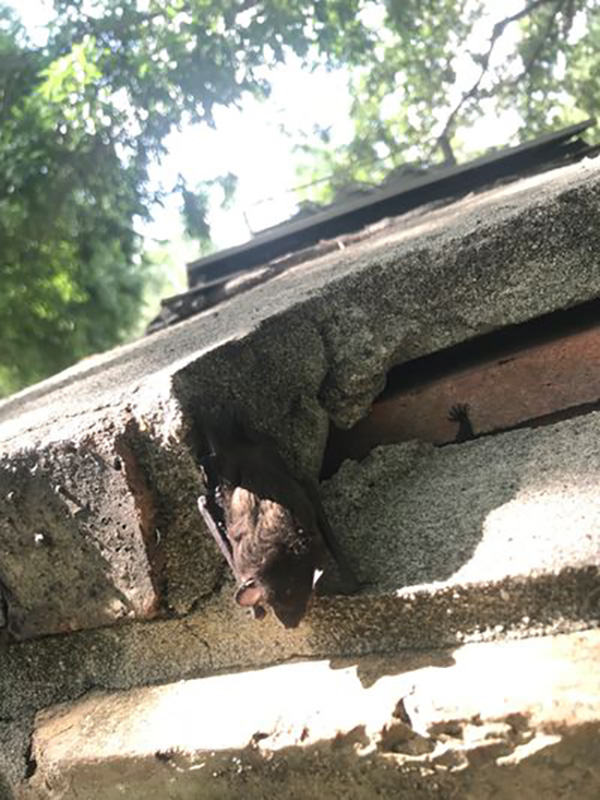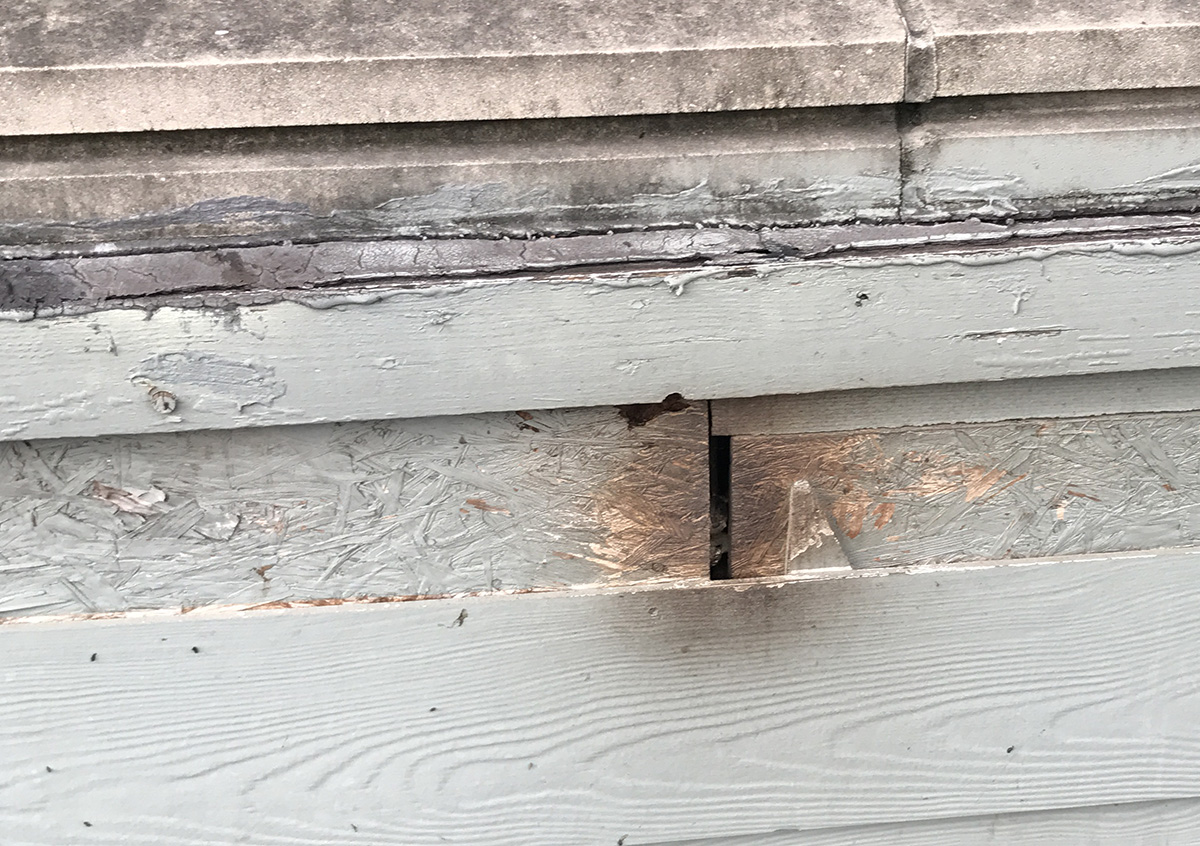A missing brick makes for a perfect doorway to a bat colony.
This space is all it takes for a bat to get into your home.
Bat Infestations in Pennsylvania
Filling a range of ecological niches, bats are an integral part of our ecosystems. Depending on the species a bat’s diet can span from frugivore to nectarivore to insectivore. Bats are important for seed dispersal, pollination, and insect population control. Of the 9 species of bats in Pennsylvania, 3 are known to inhabit structures.
The big brown bat (Eptesicus Fuscus) and little brown bat (Myotis Lucifugus) comprise the majority of bat infestations in the Pennsylvania region. These bats are colonial insectivores, which means they eat insects and prefer to live in groups. The types of voids in many of the structures we build provide the perfect shelter for these small mammals to colonize. With the many styles of architecture in Pennsylvania, bats are constantly finding new ways to infest both residential and commercial buildings.
How Do I Know if I Have an Infestation?
There are three common ways a bat colony is discovered on a structure. If you experience any one of the following, do not wait to call.
- You see bats or droppings in your attic
- You notice an increase in the number of bats flying around your home. (See Video Below)
- You find a live or dead bat in or around your home.
- Your neighbor tells you they have noticed bats around your house.
Our species of bats will often hibernate in caves, trees, and even structures. Attics, soffits, eaves, ridges, and chimneys are some examples of areas where bats can enter and roost. In warmer months bats increase as a nuisance when they form maternity roosts in residences and businesses where they have and raise their young from early June to mid-July. Colonies can double or triple in population during this period as well as the contaminant and dropping accumulation within the structure. Because of local, state, and federal protection for threatened and endangered species of bats, it is important to hire a professional to perform the sealing and exclusion of your building to ensure humane removal.
This home was infested by bats in the Houston Texas area. While Pennsylvania will not typically see colonies this large, it’s wise to keep an eye out for increased bat activity in the evening.
I Think I Have a Bat Infestation. Now What?
Contact us and we’ll perform a full inspection of your home or structure. If you do have a bat colony in your structure, we’ll locate it as well as all potential entry points for the bats. We’ll provide you with a clear and honest report of the evidence we find and a detailed estimate for a solution which best meets your situation’s needs.
How Soon Can We Start?
In most cases, we can begin the process quickly. There are, however, times where we can’t complete the exclusion process due to the bats’ maternity season. In the Pennsylvania area, that season falls between June 1 and July 15. Between these dates we can begin sealing but must wait until mid July to install the exclusions. For more information see our bat exclusion page.



